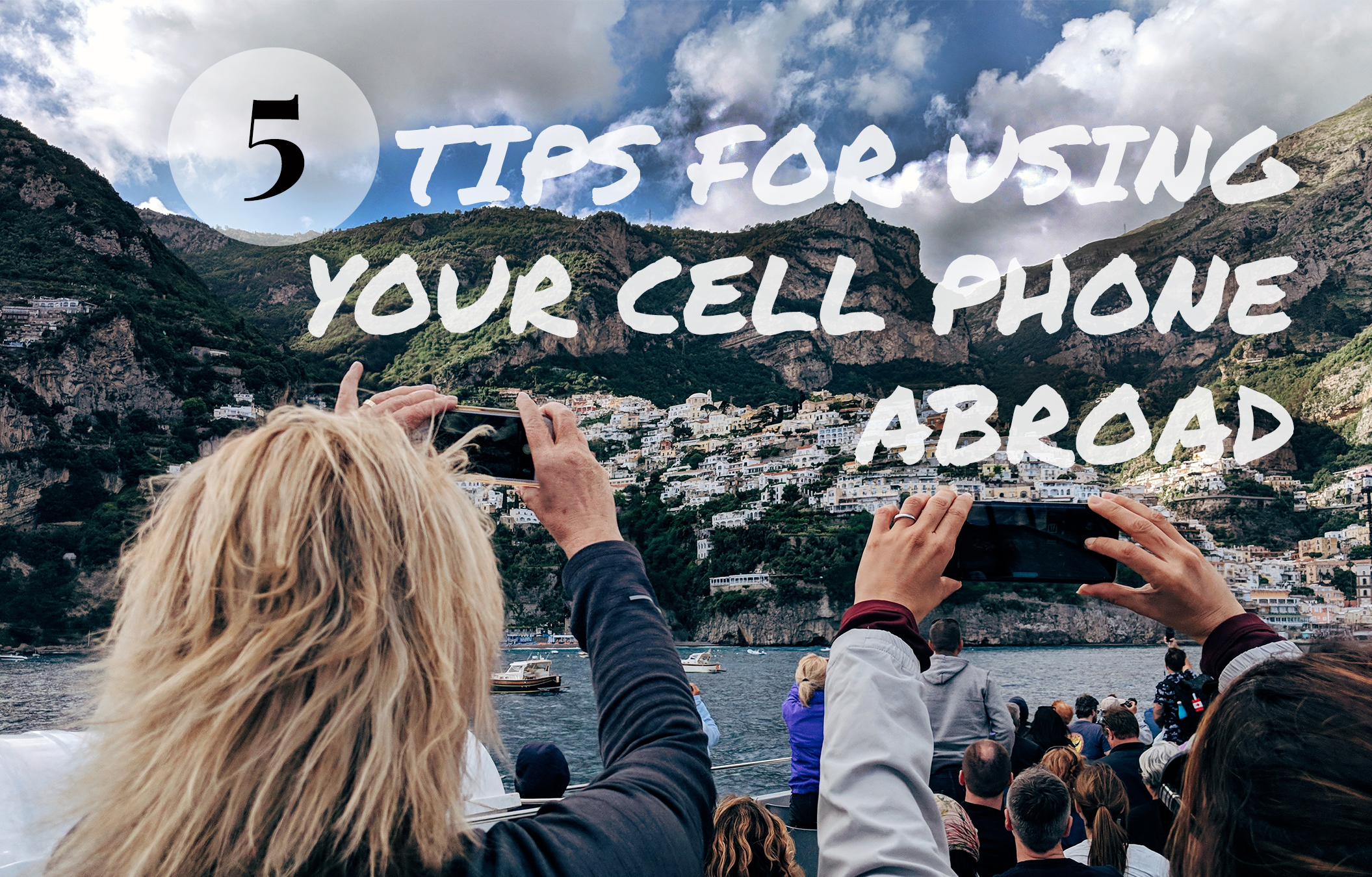5 Tips for Using Your Cell Phone Abroad
/International travel can wreak havoc on your cell phone bill. When I worked in the telecom world we frequently had clients who ran up bills over $2,000 a month from roaming on their vacations, and had no clue that data was still running on their phones!
Nowadays, using your cellphone abroad doesn’t have to be so difficult, confusing, or expensive. The major US cell phone carriers have international roaming plans which vary in their offerings and cost.
However, if you’re leaning towards “going dark” and foregoing an additional plan while traveling, then here are some tips to make sure you’re not racking up bills that will cost you more than your trip!
1. Understand what you’re being charged for
Most cell phone bills are broken into three parts where you’re charged for (1) voice, (2) text, and (3) data.
Data seems to be the most complicated for my clients when they talk about international usage. If you are connected to a wi-fi network accessing the internet or apps, then you are not using data. If you are not connected to wi-fi and you’re accessing the internet or apps that require internet then you’re using your data. As soon as you arrive to your hotel, connect to the wi-fi network to limit the data you use.
2. Turn off your “roaming data”
An easy way to prevent data charges is to turn off the setting on your phone which allows “international roaming.” Here are tutorials for iPhone users and Samsung users.
3. Use apps for messaging & calls
There are many apps which can replace your “call” and “text” usage so that when you’re connected to wi-fi you can use that connection (as opposed to your voice, text, or data usage) to talk or text.
Apple users can use iMessage, FaceTime, and voice calls over wifi.
Apple and Android users alike can use apps like WhatsApp, Skype, and Google Hangouts which allow you to message, call, and video call with other users who have the apps.
To call regular phone numbers (people who don’t have these apps or to landlines) you can also use Skype over wi-fi and purchase credits (like a calling card) at a very low per-minute calling rate.
4. Download maps for offline use
Travelers commonly rack up data usage from using their maps for directions or navigation while traveling.
In the Google Maps app, you can still use the compass/orientation even if your data roaming is turned off. Additionally, you can download maps (over wifi) for offline use while you’re walking around. (Google Maps instructions for offline downloads.)
5. Monitor data usage
if you decide to leave your data plan on, but want to make sure you’re not going over the allotted amount, you can use a free app like My Data Manager to monitor your usage.
Of course this is just the tip of the iceberg when it comes to using technology efficiently while traveling. If you have specific questions let us know and we’ll do our best to answer! Shoot us an email at hello@thetablelesstraveled.com.
Pin this post to Pinterest so you can save it and come back to it!













